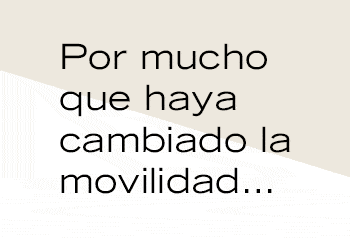Las Renewable energy sources are resources provided by nature that are clean and inexhaustible. These energies, unlike fossil fuels, do not produce greenhouse gases or pollutant emissions of any kind, but they do have other ‘undesirable’ effects.
The production of energy from renewable sources often becomes a threat to biodiversity can cause irreparable damage to the environment, ranging from habitat degradation and species extinction, to landscape damage and the impact of ecological balance.
An energy revolution that supports decarbonization and is the right way to achieve an energy transition enable the decoupling of the fossil fuel system it is becoming more and more necessary. But it is essential that all possible measures are taken so that this progress is made without endangering the environment or biodiversity.

Responsible renewable energy sources
«“It’s something illogical, ironic, zero ecological… It’s eco-illogical if renewables are not responsible.”. This is the chorus of the theme song of an animated short film in which three renowned artists from the Spanish music scene have united their voices: Eva Amaral, Canijo de Jerez and Albertuchoand the multidisciplinary actress Masi. They all participate altruistically in the Eco-ilológico campaign of an NGO that defends “Renewable Responsible”. By doing so, they want to make it clear that renewable energy sources, although essential for an energy transition that addresses the ecological crisis that our country and the planet are experiencing, cannot be located in places sensitive to biodiversity and local populations.
The use of renewable energy sources is crucial for combating climate change, but their irresponsible implementation exacerbates the negative effects on biodiversity. The latest technical report from an environmental organization “From the eco-illogical to the responsible: planning renewable energies to protect biodiversity” shows the consequences of the implementation of wind and solar energy in places that are not suitable for it. In the same way it shows that Collisions with wind turbines in wind farms are one of the leading causes of unnatural bird deaths in Spain.


The report states that According to the latest data, the annual accident rate in wind farms is between 6 and 18 million birds. With 1,350 wind farms and 22,042 wind turbines installed (29.6% more), the number of collisions has currently increased significantly. Furthermore, the photovoltaic deployment carried out in recent years is planned in prime agro-steppe areas, harming the birds of this habitat, which require large open areas.
Give a voice to this issue
To raise awareness on this topic and advocate for a responsible and planned ecological energy transition, the NGO launches this retro-style animated short film, which the artists have joined together with the band Naked Family, responsible for the musical basis. Created by the Darwin & Verne agency together with the international illustrator DesmunCubicappear the various animated characters of Eva Amaral, who becomes ‘Pardeva’, a Mediterranean Cory’s shearwater; the Canijo de Jerez, ‘Sisón Canijo’, an ordinary small bustard; Albertucho is ‘Buitrucho’, a griffon vulture, and Masi represents the ‘Sun’.
They defend together that the development of renewable energies can and must be compatible with the conservation of nature and the local population. Why, What sense does it make that the energies that are supposed to care for the environment contribute to its destruction? It seems more than ecological, it seems eco-illogical.
“Society is not fully aware of this problem. With this campaign we want to convey that there is no opposition to renewable energy sources, but to the way they are implemented,” says the singer and songwriter. Eva Amaral. “It’s a nice way to explain it, delving into the contradictions that surround us all and of which we are often not aware – eco-illogical -. “Renewable energy sources must go hand in hand with projects that respect the environment, birds and other wildlife.”
“Nasty Asunción Ruiz, executive director of the NGOit is necessary to build a logical, fair and responsible energy model, which ensures that the energy transition is also an ecological transition. For this to happen we must loudly and clearly denounce the incoherence of many of the actions being performed, using all possible techniques – in this case irony through animation – and all types of speakers, to create a to reach as wide an audience as possible.
I would like to express our deepest gratitude to these four artists who are resolutely and selflessly participating in our campaign. Their voices will serve to multiply the message we have been spreading for three decades: without responsible renewable energy, there will be no healthy, safe and fair future for people and nature. «A resounding yes to renewable energies – concludes Ruiz ̶, but only if they are responsible: minimal environmental impact, maximum social benefit.
Plan for the future
The NGO participation since 2019 in 596 environmental impact assessments (EIA) – 59% solar energy projects and 35% wind energy – has, together with the cooperation of the CSIC, made it possible to take a rigorous approach to the current and future energy panorama to achieve climate neutrality without endangering ecosystems.
To date, impact assessments are insufficient to prevent the negative consequences of the deployment of renewable energy sources, although a significant percentage of these can be avoided with adequate planning that Identify the best places to install this technologyreducing the number of kilometers of overhead power lines and installing bird detection systems and automatically shutting down wind turbines.
Only half of the autonomous communities have that a strategic planning in energy to minimize social and environmental conflicts, and very few have spatial zoning. Moreover, the majority of initiators do not conduct an adequate dialogue with the population, and the administrations do not promote truly participatory processes. There is also no accessible public register of projects that have been approved or are in the permitting phase, with the exception of Aragon, the Canary Islands, Catalonia, the Valencian Community and Navarra.
Energy communities and collective self-consumption remain blocked due to regulatory barriers that delay their implementation and although lower impact technologies such as bladeless wind turbines have been proposed, there is no public support or firm commitment from the initiators to promote new technologies with less damage to nature.
On the other hand, though Reducing energy consumption should be an important policythe message given is that energy costs need to be reduced, which gives an idea of the ease with which you can continue to use the same amount or even more.
The challenge is to multiply renewable energy sources without increasing their impact
The development of renewable energy sources in Spain has been significant, but there is still a long way to go. Although About 50% of electricity comes from renewable sources, These represent only 25% of total energy consumption, as key sectors, such as transport and industry, are still highly dependent on fossil fuels. To achieve climate neutrality by 2040, renewable capacity must be increased urgently and responsibly over the next decade.
According to the government plan (PNIEC) for 2030, Spain has, among others, the following objectives: 48% of renewable energy sources in final consumptioncompared to the current 23.8%, and 81% of renewable energy sources in electricity generation, compared to the current 50.3%. This means that wind energy will be increased from the current 30,108 MW to 62,044 MW, including 3 GW offshore wind energy, which corresponds to 639 parks of 50 MW. And in the field of photovoltaics: increase from the current 21,311 MW to 76,387 MW, which corresponds to approximately 1,100 parks of 50 MW, which would cover approximately 126,500 hectares (0.25%) of the Spanish territory.
The NGO emphasizes that renewable energy production must be adapted to national demand, and not promote projects solely for export; Furthermore, it is essential to reduce overall energy consumption and improve efficiency. It has been demonstrating for more than thirty years that the development of renewable energy sources can and should be compatible with the conservation of nature. has prepared compatibility maps to identify suitable areas and areas to avoidintegrating data on terrestrial and marine biodiversity.
“We want to show citizens and political leaders that change is not only necessary, but also feasible. A strategic and responsible commitment is crucial to ensure that renewable energy sources are not only part of the solution to climate change, but also a model of coexistence between nature and people,” he concludes. Juan Carlos Atienza, head of the NGO’s Green Transition Advocacy Unit.

